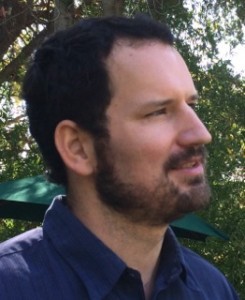CSUN Professor Explores the Question: Is Akkermansia a Next-Generation Probiotic?

Gilberto Flores
Items claiming to contain probiotics — live bacteria and yeasts allegedly good for our health, especially our digestive systems — line the shelves of grocery and drug stores across the country. As the trend continues to take hold, manufacturers are looking for new “good” bacteria to add to their products.
California State University, Northridge microbial ecologist Gilberto Flores has received a $435,000, three-year grant from the National Institutes of Health (NIH) to understand how one potential probiotic bacterium — Akkermansia muciniphila — promotes health in its human hosts. His research could have implications for the ever-growing probiotic industry, as well as provide insight into what actually goes on in that distinct bacterial community we call our gut, a world that Flores said scientists are still studying.
“It’s pretty remarkable that most of us, for most of our lives, are pretty healthy — given the constant onslaught of invaders, including bacteria, introduced by outside sources,” Flores said. “Our bodies have to be very wise in identifying what is good, what is bad, what works and what doesn’t. We don’t fully understand what a healthy gut microbiome truly is. What might be healthy for one person may not be healthy for all.”
Akkermansia muciniphila stands out because it sustains itself by consuming mucin, the main component of the mucus our bodies produce to, among other things, protect our cells. As Akkermansia consume mucin, they help signal our bodies to produce more.
“Most other gut bacteria prefer to eat what we eat, so to speak,” Flores said.
He said there has been increasing interest in the probiotic industry to sell products containing Akkermansia.
“One of the reasons I got funding is because all the information that says Akkermansia is good is based on research of only one species of Akkermansia,” Flores said. “We know that bacteria are tremendously diverse, even within a particular species. So, to base everything we know off of one species is really a dangerous thing to do.”
Using donated fecal samples from healthy adults, Flores and a team of graduate and undergraduate students are isolating and identifying novel Akkermansia species in the laboratory. They will determine the genetic makeup of each organism to figure out what else Akkermansia do besides eat mucin. They also are studying how the organisms respond to stress, how they actually eat mucin and other details of their physiology.
“This will deepen our understanding of the Akkermansia lineage as a whole, not just one representative,” Flores said.
That understanding is important, he said, because he expects probiotic products claiming to contain Akkermansia muciniphila to be on store shelves in the not-too-distant future.
“About 70 percent of all people living in Western societies seem to have Akkermansia in their bodies,” he said. “What we don’t know is if the organism in my body is the same as the one in yours, and if they all do the same thing. If we find ways to enhance their numbers in our bodies or selectively stimulate their growth, we don’t know yet if there will be unintended consequences to disrupting the normal ecology of our microbiomes.”
Flores noted the probiotic industry is less regulated than the pharmaceutical industry.
“They basically have to demonstrate that bacteria in their products don’t carry any transferable antibiotic resistance or toxin-producing genes that we know of,” he said. “But we still don’t know a lot about the ecology of bacteria in their products. With Akkermansia in particular, one of the things that I am looking at is how it interacts with other organisms in our gut.”
Flores said Akkermansia has the potential to be identified as a keystone species, a species on which other species in an ecosystem largely depend. If a keystone species was removed or its abundance was significantly altered, the ecosystem could be impacted dramatically.
“When it does degrade mucin, it liberates a bunch of other compounds that other organisms can feed off of, so it could benefit other good or other bad bacteria,” he said.
The problem, he said, is that scientists don’t know what impact the consumption of additional Akkermansia will do to the microbiome in our gut.
“We’re playing around with the balance of what is supposed to be in our gut,” Flores said. “That’s the story of microbiology: If you get good bacteria in the wrong place, it’s going to be bad. Ecologically speaking, things in a healthy state are presumed to be in balance. If you shift that balance in either direction, we don’t fully understand the outcomes of what will happen over different time scales in our bodies.”

 experience
experience